b fold the truth said:
OK...I did some overhead squats last night at the end of my workout. I did get them on video (so that everyone could laugh at me) but I can't post them right now. I will try to post them later this evening or on Saturday..
I used the 45 pound bar and it was hard. I now know a few things:
1) It fries my mid back.
2) It is hard.
3) It fries my delts.
4) It is really hard.
5) I need to wear my OL shoes when I do them.
6) Did I mention that it was hard?
7) I WILL get better at them.
Any ideas how I can work them into my routine? Maybe doing them 3-4 x a week with the bar maybe?
B True
Firstly I do them at the start of my workouts as a total body warmup etc. with just a 45lb bar. So yeah I do them pretty regularly, I can do up to 115lbsx3 so far when I load up

Its a nice active recovery exercise I find.
You need flexibility in shoulders, it will help in that area, cuffs too, but you need some flexibility to do them. Wider grip can make it much easier, and since your quite tall, maybe try a collar to collar grip or slightly less would work. Too wide makes locking out harder though. Doing shoudler dislocates and light snatch grip behind the neck presses to start off before doing these will help.
It's also a mind thing, even now, the first rep is hard because typcially the brain isn't used to the position.
Some performance tips
1) pull the bar apart and lock the shoudler blades down. use a wider stance and angle the feet out. The narrower the stance the harder it is, so as you get betetr you can narrow the stance.
2) be conscious keeping the bar above your centre of gravity - so the bar should go behind you slight as you descend. Look around and see where the bar is, it will take some time to get a feel for this.
30 then hold the bottom position for a couple second before going back up, its good for flexibility in the hips and shoulders.
Once you get good do some overhead presses at the bottom

You will find your high bar squat form improve dramaticly from doing these. It is impossible to overhead squat wrongly, you just won't make it down

Which then leads to drop snatch balances for the advanced. Start the bar on the back like your squatting, snatch grip, standing. Now drop down to the bottom of the overhead squat position, while keeping the bar where it started, so you have to lockout the arms as you descend, then rise up as per normal and return the bar to your shoulders.
Tough move - but I love it - I get stares at the gym




The “Snatch Balance,” otherwise known as the “Drop Snatch” or the “Drop Squat,” is an extraordinary exercise and accomplishes virtually every objective in strength training. It is a perfect marriage of strength, speed, coordination and flexibility. In discussing this movement I consulted with Sr. International weightlifting coach and the head coach of the U.S. Womens Jr. team, Mike Burgener and he noted to me he felt it was one of “best exercises in developing the neuromuscular coordination for snatching.” While many coaches/athletes may question the need for an athlete to perform such a movement if he never intends on being a competitive weightlifter, I would add that is also one of, if not the best addition to an athlete’s lifting regime to improve dynamic range of motion and balance. Again, we keep returning to the same premise over and over; we utilize the Olympic lifts and their hybrids not to become better lifters but to become better athletes. Without question, the “Snatch Balance” is part of the puzzle.
Performance of this lift takes a little time to get adjusted to the seemless flow of movement in what feels almost like pulling yourself down. Yes, I understand that seems like an odd statement but the vigorous explosion upward makes the weight feel as if it has “unloaded” as you simultaneously drop under it while locking your arms out in the Snatch grip position. The lift is intiated from a standing position with barbell resting on shoulders and bar gripped as in performing the Snatch lift. At this point I wish the athlete to focus intently on a point on a wall directly in front of them. This will assist with balance and maintaining a level head throughout the lift. With the first movement the athlete drops into ¼ Squat position alike the counter movement in the performing a Vertical Jump. From this position, the lift becomes an extraordinarily quick and explosive ballet of power and speed. Vigorously explode the weight upward, extending the traps and hips while simultaneously dropping into a full Overhead Squat position. As the weight is locked out the athlete has settled perfectly underneath it at the base of the Full Overhead Squat position. From this position, complete the Overhead Squat as noted in prior articles and safely lower the bar to your shoulders to repeat the lift till the desired rep count is reached. Power, speed, balance and yes intense concentration are all an determinants of completing this lift successfully. The success of this lift as with others is up to you. For us to complete our task of learning the classic Snatch lift, we need to perfect this movement and I suggest daily use as a warmup (with unloaded bar) until technique and range of motion is at desired levels.


 Please Scroll Down to See Forums Below
Please Scroll Down to See Forums Below 















